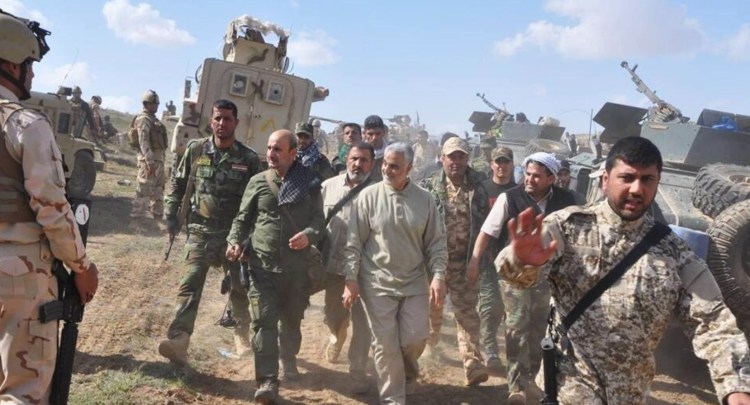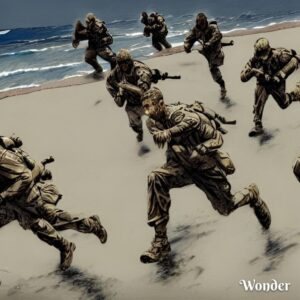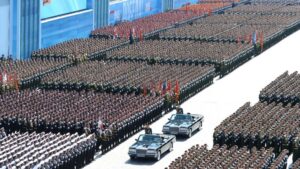The Syrian Civil War is one of the world’s most brutal conflicts of the 21st century. With a myriad of foreign influences, Syria quickly became a proxy conflict filled with dozens of militias with various end goals and numerous foreign actors with their interests.
The Islamic Republic of Iran is one of the foreign actors who not only directly intervened but has goals and methods in Syria. Not only is it sending tens of thousands of militants to Syria, but Iran’s Revolutionary Guards Corps (IRGC) is sending Shiite families to the country to change demographics favorable to the mullahs’ end goals.
Syrian Civil War
Starting in 2011, on the backdrop of pro-democracy protests, the Syrian Civil War intertwined with the Arab Spring. The demonstrations would quickly spiral into an armed conflict as Bashar Al-Assad, who inherited the presidency from his father, ordered his forces to open fire on protesters.
Rebel factions would form and quickly score major victories against Assad’s forces, such as the initial seizure over most of Aleppo, Eastern Syria, and the Damascus suburbs. However, the victories would quickly backfire as Islamist militant organizations such as Al-Nusra and ISIS became the strongest factions and quickly fought and took territory away from the anti-Assad groups.
Assad would become desperate and enact brutal methods to quell the insurgency, such as chemical weapons attacks and the notorious barrel bombings.
To make matters worse, for the rebels, the perspective of Western weapons to fight against Assad reached a dead end due to fears that extremist groups would eventually use them. Likewise, Syrian government forces would have a major boost in backing as Russia, Iran, and IRGC-backed groups directly intervened to save Assad’s depleted army.
Iranian-led Intervention
Assad’s Syria became an Iranian proxy on the backdrop of the Baathist party split with Saddam’s regime. The mullahs of Iran would have favorable relations with Assad’s family in return for Syria supplementing the strongest of Iran’s proxies, Hezbollah, during the Syrian occupation of Lebanon.
Initially having a small military presence in Syria at the onset of the civil war, the IRGC dispatched Hezbollah to intervene in 2013 directly. Hezbollah’s intervention turned the tide of the war as the paramilitary cut off rebel groups from the Lebanese border and the strategically important Al-Qusayr.
Hezbollah’s direct intervention came with great controversy for the paramilitary as pre-civil war; the group was popular in the Arab world for fighting Israel. However, fighting for Assad and fighting primarily Sunni Muslims, the Shiite militia became involved in sectarian violence and linked to human rights abuses in Syria.
Alongside Hezbollah, the IRGC would take substantial casualties in Syria from not only active combat against extremist and rebel factions but also targeted strikes by the Israeli Air Force.
Supplementing Hezbollah, the Russian military, the Syrian army, and IRGC, the mullahs would dispatch a constant stream of Shiite militiamen from countries such as Iraq and Afghanistan to Syria to fight for the Assad-led coalition.
The Iranian military currently has a presence in the population centers of Damascus, alongside the Lebanese border, and in Eastern Syria, where the IRGC attempts to encroach and intimidate American forces and their Kurdish allies. It is unknown how many direct IRGC personnel have been killed during the war. Still, the Iranian-affiliated militias have suffered heavy casualties but can replace losses due to the high turnover of forever fighters sent into Syria.
General Hamid Taghavi of the IRGC via Long War Journal
How the Mullahs Are Growing Influence in Syria
Iranian intervention in the Syrian Civil War wasn’t just to continue propping up Assad’s regime but also to enact an end goal of further Islamic influence in Syria with the Khomeinist version of a growing Shia theocratic movement through population transfer.
Aside from sending tens of thousands of pro-Iranian militiamen, the IRCG also allowed the families to come with them in an attempt to change demographics in Syria favorable to the Islamic Republic’s Shiite theocracy.
During the war, over ten million Syrians fled the country to countries such as Lebanon, Jordan, Turkey, Cyprus, Greece, and the European Union. Many Syrian refugees fear return due to Assad’s notorious torture methods and chambers, such as the infamous Sednaya prison.
Now, with half the population of Syria living in perpetual exile, the Mullahs see a chance to export influence through demographic changes. Syria historically was a Sunni majority country as France took influence in the upper Levant in the backdrop of Sykes-Picot and the Treaty of Lausanne.
Hoping to have a growing Shia population with an extreme view the Khomeinists teach, not only are the Mullahs now creating their schools to export the Iranian Revolution as they did in Southern Lebanon during the Lebanese Civil War.
Thanks to the botched US invasion of Iraq and the Syrian quagmire, the Islamic Republic also had a land corridor from Iran to Iraq to Syria to Lebanon to send a constant stream of weapons to Hezbollah against their shadow war with Israel. Not only does the IRGC have a foothold on Israel’s border with Lebanon, but another one in Southern Syria from Tehran’s military intervention.
Syria, due to the civil war, may take decades to recover and is now a frozen conflict. However, one of the biggest winners of the war was the Islamic Republic of Iran, which has not only imported large military assets into Syria but tens of thousands of followers and families into the country to enact a population transfer to continue to export the Iranian Revolution.
—
Disclaimer: SOFREP utilizes AI for image generation and article research. Occasionally, it’s like handing a chimpanzee the keys to your liquor cabinet. It’s not always perfect and if a mistake is made, we own up to it full stop. In a world where information comes at us in tidal waves, it is an important tool that helps us sift through the brass for live rounds.



